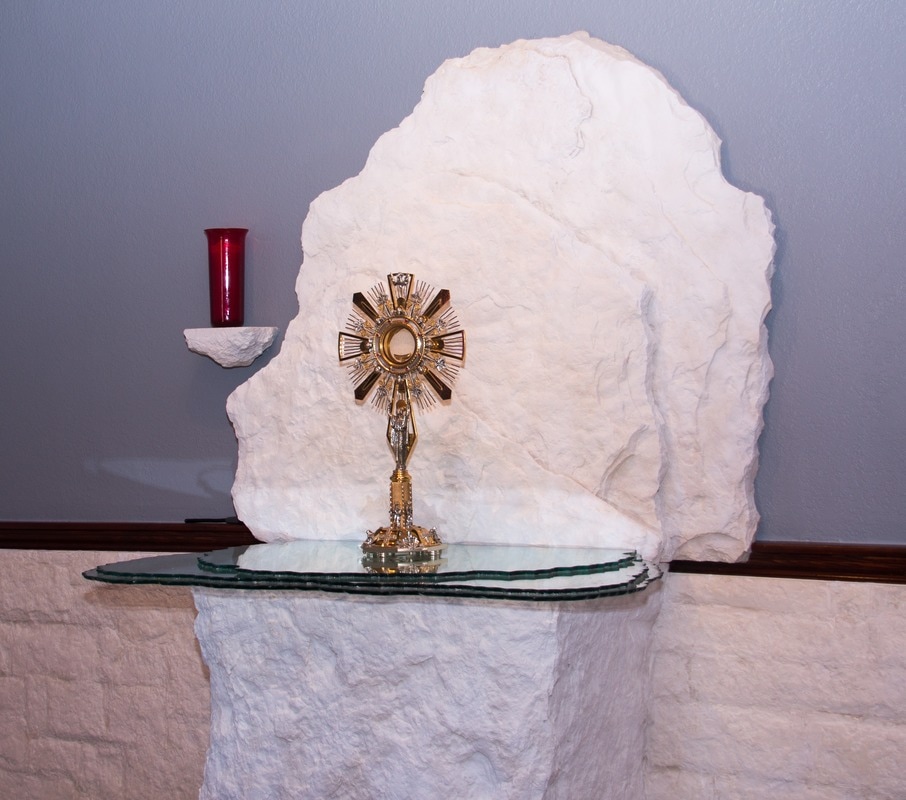Adoration
|
What is Perpetual
Eucharistic Adoration? A long held devotion of the Catholic Church, allows adorers to pray and worship in the presence of the living God.
“Perpetual Eucharistic Adoration is the adoration of Jesus Christ present in the Holy Eucharist. In the many Churches that have this adoration, the Eucharist is displayed in a special holder called a monstrance, and people come to pray and worship Jesus continually throughout the day and night. Christ’s great love for us was shown when he was crucified on the cross to pay the penalty for our sins and give us eternal life. He loves us without limit, and offers Himself to us in the Holy sacrament of the Eucharist. Can we not give Jesus a few minutes of love and adoration in return?” |
Adoration means the continuous, uninterrupted presence of Jesus (in the body of the Eucharist) and is available at our parish in our Adoration Chapel. Jesus is present 24 hours a day, seven days a week. We are all invited to spend some wonderful, silent moments of prayer with Him each day, or as often as we can. The Living Presence of Jesus, in the Eucharist is really the "cornerstone" of our Catholic Faith - upon which we build all subsequent spiritual relationships with Jesus that profoundly influence our daily life!
Our Catholic Community is blessed to have Adoration. The graces we receive are unlimited as we are able to have a quiet, special time and place with our Lord. All are welcome to worship in the chapel. Everyone is encouraged to drop by and pray as part of their daily devotion Check the current Bulletin for open hours. For more information or to sign up for an hour of Eucharistic Adoration, contact the Parish Office. Substitutes are ALWAYS needed! Please call the Parish Office to add your name to the sub list. St. Victor Chapel Adoration is held every Monday from 4:00 PM - 5:00 PM |
